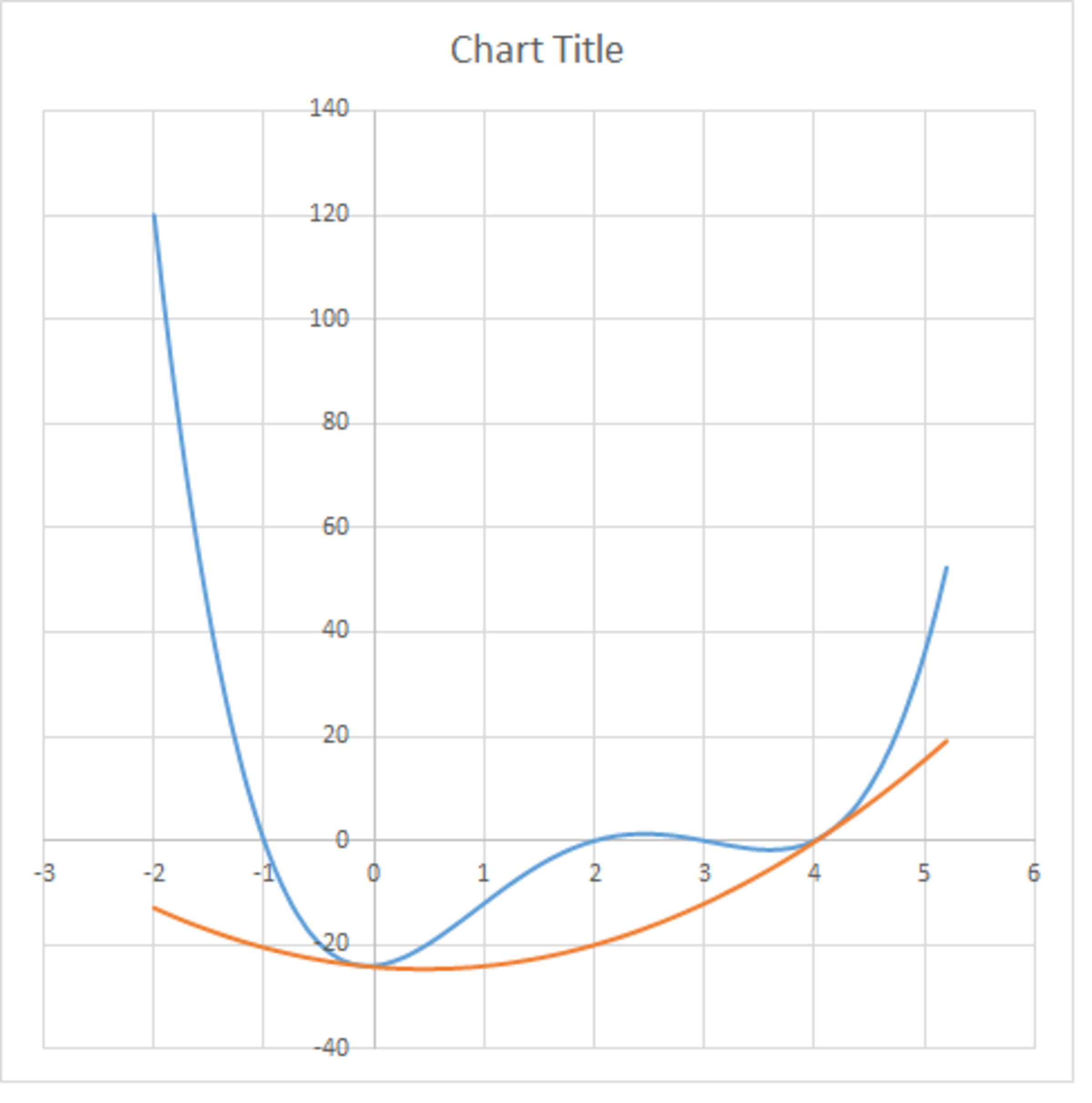Doubly Tangent Parabola
Let the quartic function be given by
A parabola Q(x) is tangent to the graph of at two distinct points, and in addition, passes through the point . Let this parabola be described by
Find .

The answer is 27.944.
This section requires Javascript.
You are seeing this because something didn't load right. We suggest you, (a) try
refreshing the page, (b) enabling javascript if it is disabled on your browser and,
finally, (c)
loading the
non-javascript version of this page
. We're sorry about the hassle.
We have
Q ( x ) = a x 2 + b x + c
as the quadratic function whose graph is tangent to f ( x ) at two distinct points. Define
g ( x ) = f ( x ) − Q ( x )
Then, since f ( x ) opens upward, it follows that, f ( x ) has to be above Q ( x ) for all x except at the points of tangency, where they are coincident. This means g ( x ) is always non-negative.
Now,
g ( x ) = x 4 − 8 x 3 + ( 1 7 − a ) x 2 + ( 2 − b ) x + ( − 2 4 − c )
Since g ( x ) is non-negative and has two roots, then these two roots must be double roots, and therefore,
g ( x ) = ( x 2 + e x + f ) 2
for specific constants e , f .
Expanding,
g ( x ) = x 4 + 2 e x 3 + ( 2 f + e 2 ) x 2 + 2 e f x + f 2
Comparing the two forms of g ( x ) , we deduce that
e = − 4 , and
1 7 − a = e 2 + 2 f = 1 6 + 2 f ⟹ a = 1 − 2 f , and
2 − b = 2 e f ⟹ 2 − b = − 8 f ⟹ b = 2 + 8 f
and f 2 = − 2 4 − c ⟹ c = − 2 4 − f 2
We also have, (from the fact that the quadratic passes through ( 2 , − 2 0 ) that
4 a + 2 b + c = − 2 0
Combining all four equations, we get
4 ( 1 − 2 f ) + 2 ( 2 + 8 f ) + ( − 2 4 − f 2 ) = − 2 0
− 1 6 + 8 f − f 2 = − 2 0
f 2 − 8 f + 1 6 = 2 0
( f − 4 ) 2 = 2 0
f = 4 ± 2 0
The discriminant condition reveals that we must have
f = 4 − 2 0
for two real roots of g ( x ) to exist.
Hence, a = 1 . 9 4 4 3 , b = − 1 . 7 7 7 0 9 , c = − 2 4 . 2 2 2 9
It follows that
∣ a ∣ + ∣ b ∣ + ∣ c ∣ = 2 7 . 9 4 4